Part 1 Arriving in Istanbul.
|
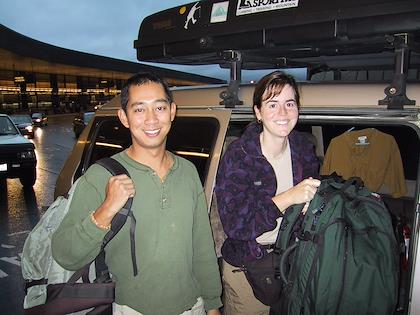 | | 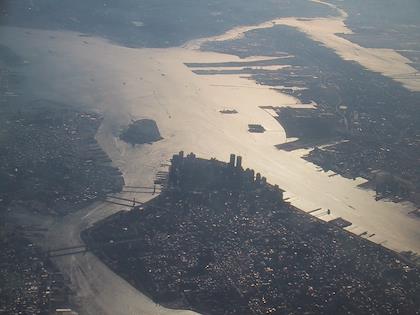 |
| Our friend Soe drove us to the the airport early in the morning. Thanks, Soe! | | We flew through New York, and had a great view of Manhattan on the way in and out. |
| |
|
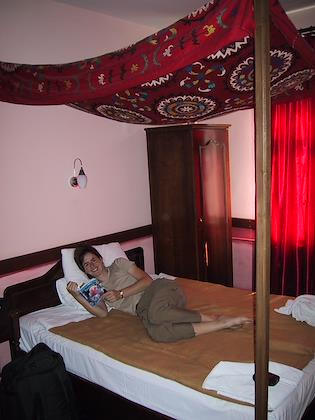 | | 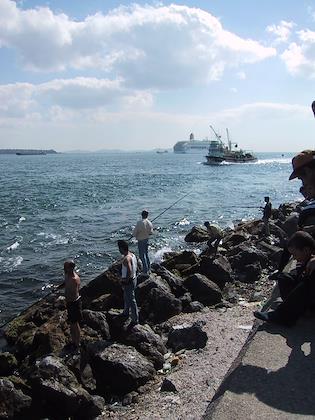 |
| Our hotel in Istanbul, Hotel Sebnem, had some great handmade embroidery in the rooms. | | On our first day, we took a walk along the Bosphoros, very close to Old Istanbul, where we stayed. It was packed with fisherman, trying their luck. |
| |
|
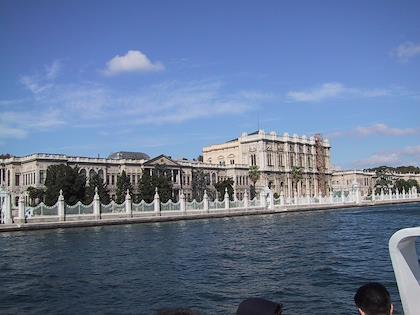 | | 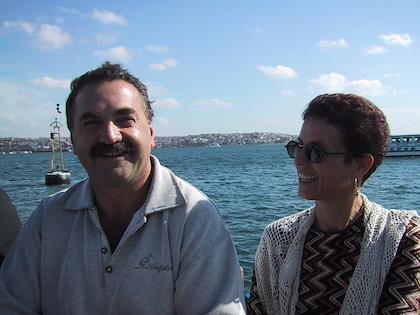 |
| We took a ferry along the Bosphoros. After we saw this palace along the water... | | ...we asked this man, who looked very Turkish to us, in Turkish, what the building was called (using our phrase book). He stared at us blankly for a few seconds, then said "I don't speak Turkish", in Australian English! We all had a good laugh over that. The name of the place was the Dolmabahce Palace. |
| |
|
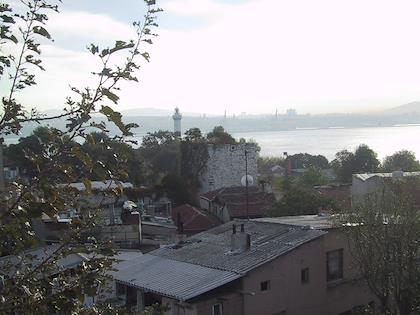 | | 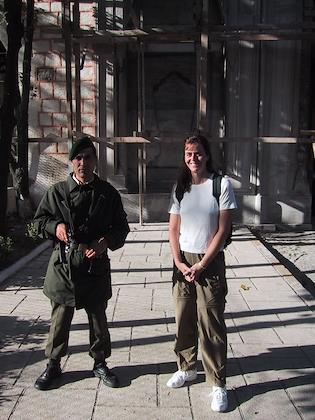 |
| This is the view from the outside patio on which we had breakfast at our hotel. | | Just outside the Topkapi palace, which was the living quarters of the sultans from the 1400 until the early 1800. Many of the tourist facilities are heavily guarded, because the Turks want to protect the tourism industry from potential terrorist attacks. This guy was a lot friendlier than he looks. |
| |
|
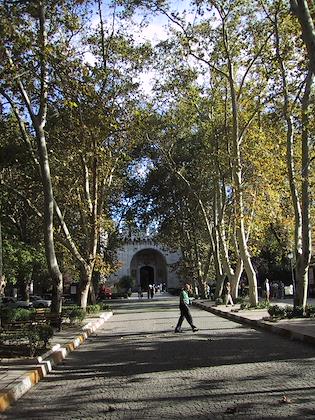 | | 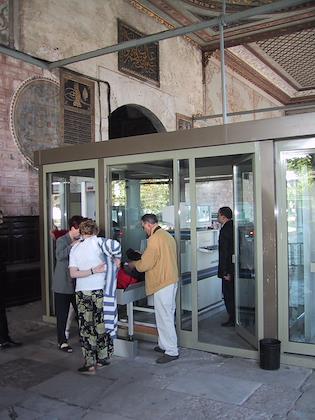 |
| The road into Topkapi palace. Very pleasant. | | We went through a full security check, with metal detectors, upon entering the palace. |
| |
|
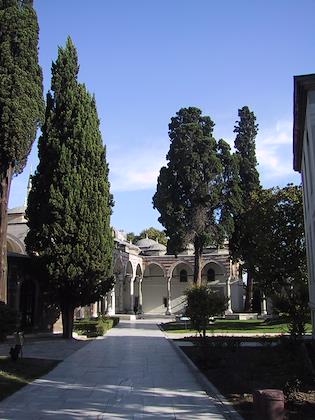 | | 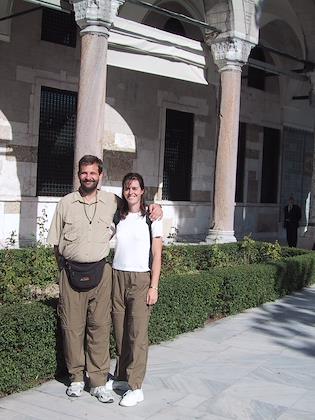 |
| The interior courtyard was beautiful. Early in the morning like this, there were very few tourists. | | Eric and I at Topkapi palace. |
| |
|
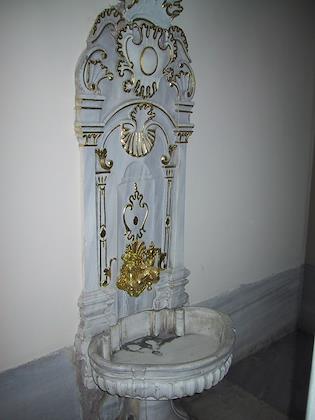 | | 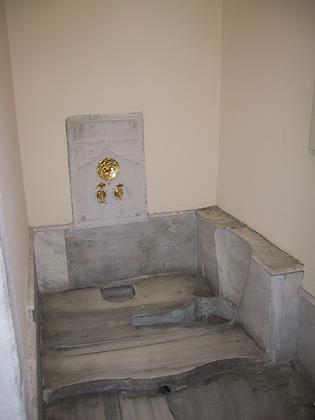 |
| We took a tour of the harem inside Topkapi palace. Some of the most interesting things to see there were the old-fashioned and ornate plumbing facilities, used by the sultan. | | This is a Turkish style squat toilet, with facilities for hand washing. Only the best marble for the sultan, of course. |
| |
|
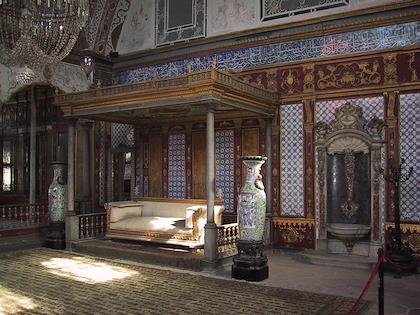 | | 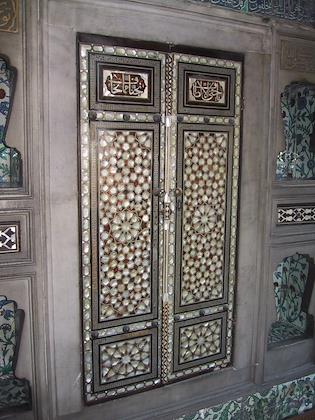 |
| This is the Emperors Chambers. | | Many cabinets looked like this, with mother-of-perl inlaid with tortoiseshell. According to our guide, often the sultans made these cabinets as a hobby. |
| |
|
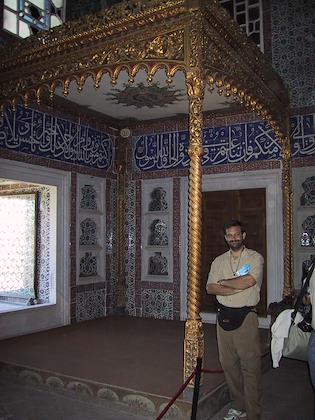 | | 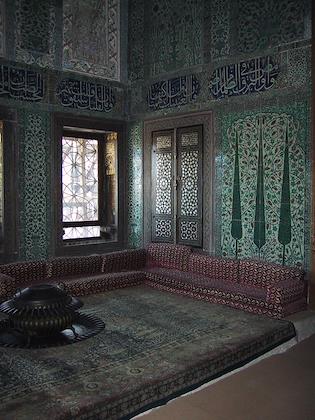 |
| Eric, in the sultan's bedroom Notice that there's no pictures anywhere, only patterns. This is because in Islam, it is forbidden to make images of people or things. | | The sons of the sultan studied in this room. |
| |
|
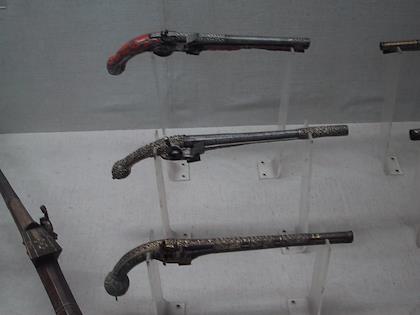 | | 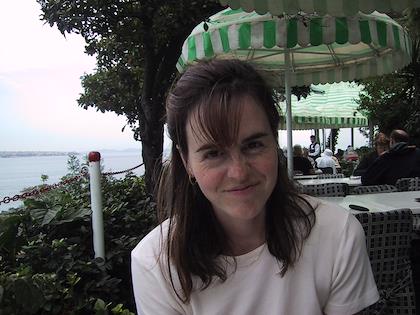 |
| We stopped off at the weapons museum at the palace. | | Lunch was at the museum cafeteria, overlooking the Bosphoros. Eric has just taken one too many photos of Sylvia. |
| |
|
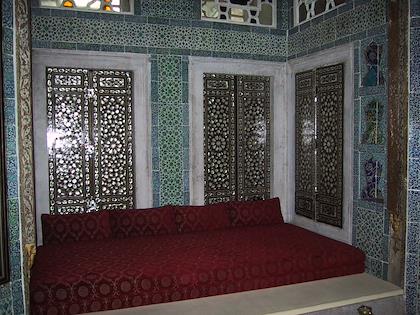 | | 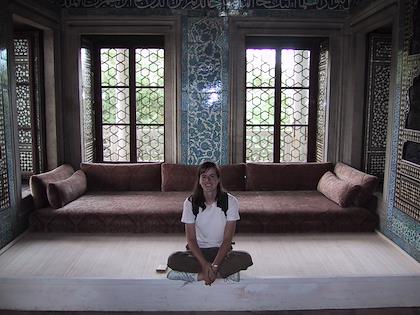 |
| These 2 photos are from separate little buildings within the palace grounds, built to commemorate military victories. | |
| |
| 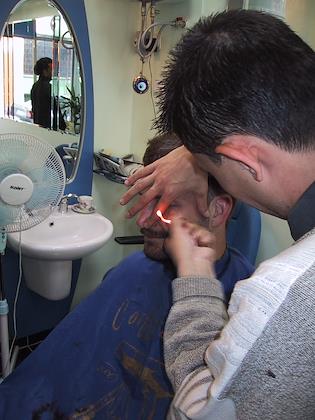 | | 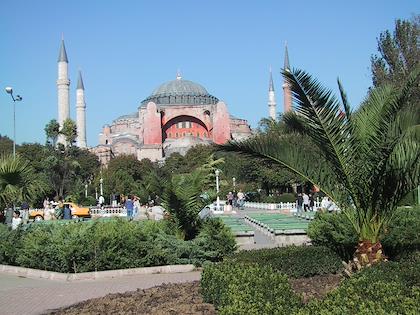 | | Eric is getting a haircut here. Part of the haircut is to burn off hair on the face and the ears. Pretty scary! | | The Aya Sofia started out as a Byzantine church built in about 500. In 1453 it was converted to a mosque, and in the early part of this century it was converted again, this time to a museum. |
| |
| 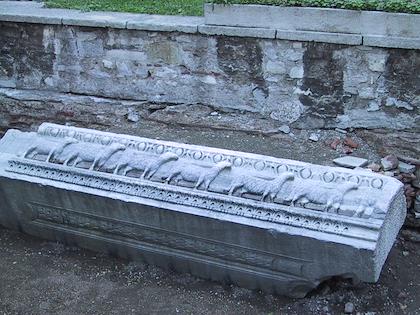 | | 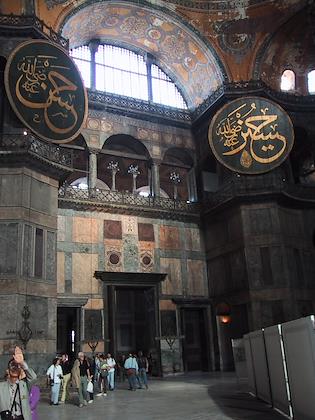 | | Right outside the Aya Sofia are the ruins of another church, from around the year 400. Excavations appear to be ongoing, and debris is scattered about outside. | | This is the inside of the church/mosque/museum. Notice the huge Islamic placards hung up to make it less church-like. The placards show the names, in Arabic, of God, Mohamed and the 4 caliphs. |
| |
| 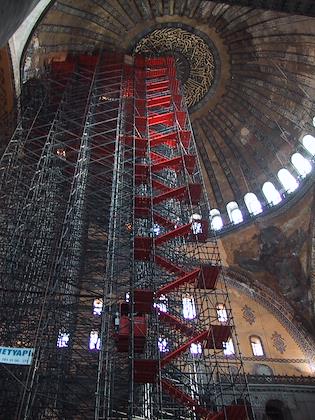 | | 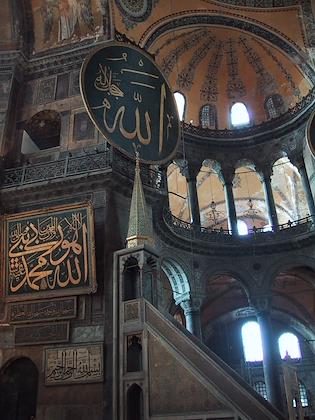 | | There's a massive reconstruction effort underway, with some very impressive scaffolding. Notice the elevator going up (the red box near the bottom). | | This structure was put in after the church was converted to a mosque. Sermon were given from it on Fridays. |
| |
| 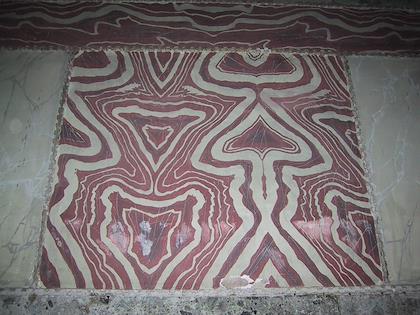 | | 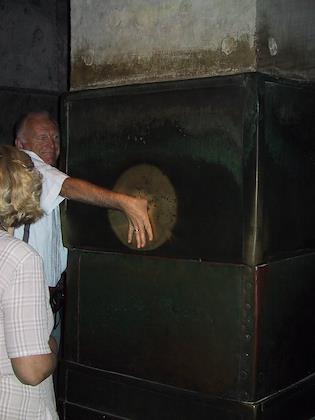 | | The matched marble panels are original, from around 500 BC, ordered by the emperor Justinian. | | There's a little hole in this column, just big enough for your thumb. Legend has it that if you put your finger in the hole and make a wish, it will be granted if it comes out moist.. |
| |
| 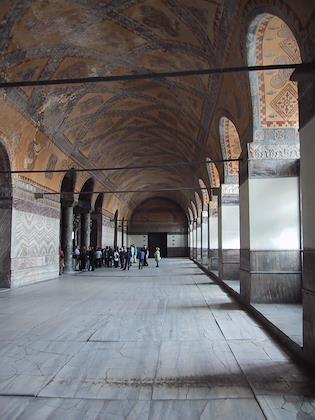 | | 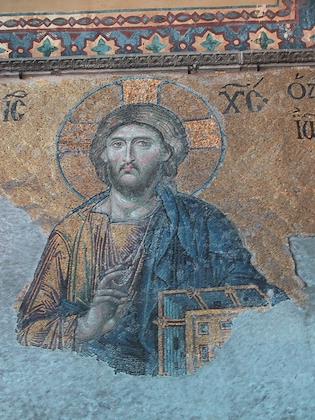 | | Here's the upper floor of the church. | | The Aya Sofia had some great mosaics. |
| |
| 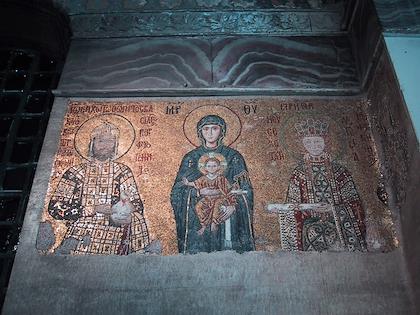 | | 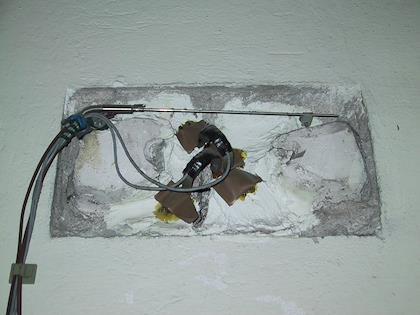 | | | We guessed that this device measures cracks in the walls, to see if they're getting bigger. |
| |
| 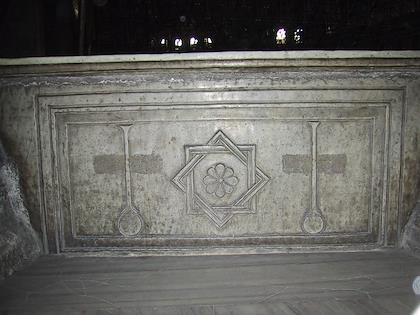 | | 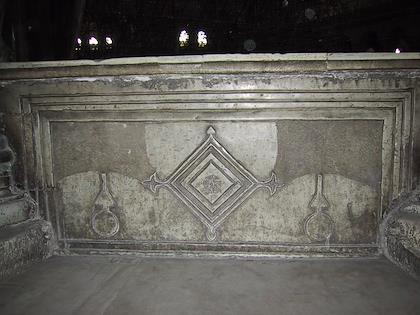 | | There were many crosses around, since the building was originally a church. All the crosses were obscured in some way, though. | |
| |
| 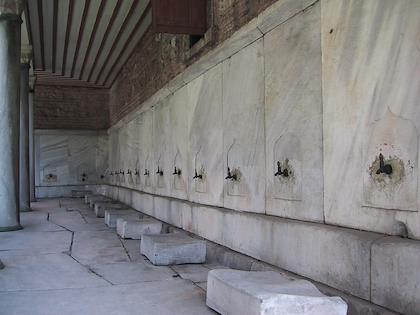 | | 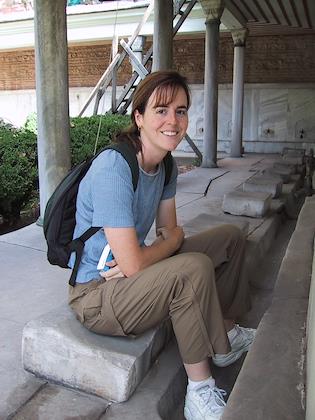 | | Outside the Aya Sofia were faucets where faithful Moslems are supposed to wash their hands and feet before prayer. | | I'm sure these were flat slabs of marble to begin with, but after thousands of people sitting on them, there's a definite butt-shaped imprint in them. |
| |
| 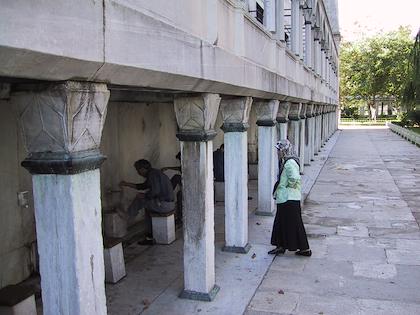 | | 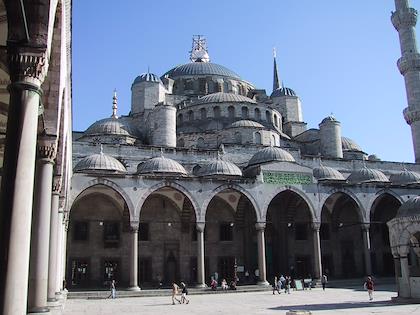 | | Just a few minutes walk from the Aya Sofia is the Blue Mosque, which is still a functioning mosque. All mosques have a place where worshippers can wash themselves before prayer. | | The courtyard inside the Blue Mosque. |
| |
|  | | 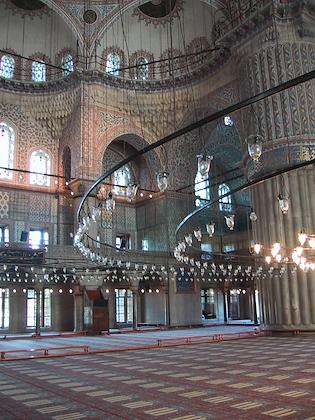 | | Here's a panoramic picture of the Blue Mosque. | | The interior of the Blue Mosque. We had to take our shoes off before entering. |
| |
| 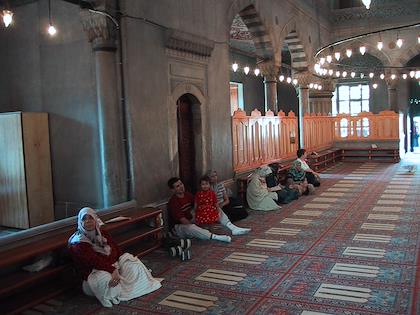 | | 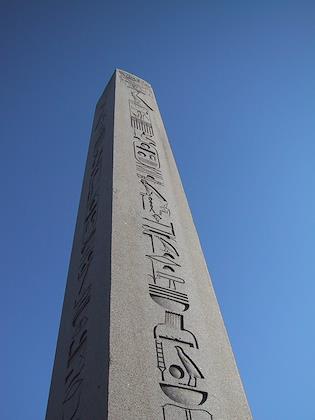 | | Some people use the mosques as a place to rest. The shelves on the side are for storing shoes. | | This is at the Hippodrome, close to the Blue Mosque. This is the Obelisk of Theodosius, carved in Egypt around 1500 AD. It's amazing what good shape the carvings are in--I guess that's what happens when you carve something from granite. Evidently the obelisk was at one time three times as tall as it is now! |
| |
| 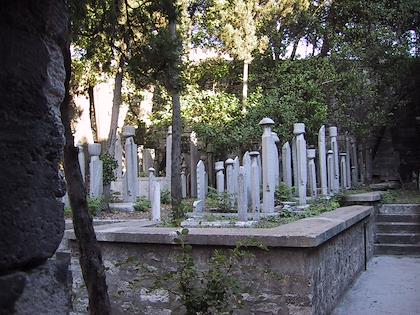 | | 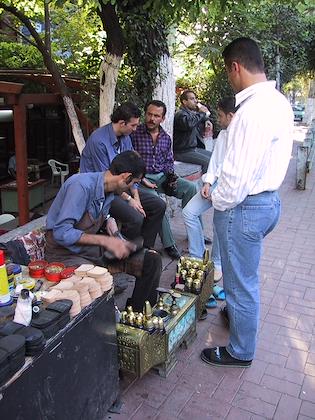 | | We took a walk around Old Istanbul. This is an old Islamic cemetery, in a mosque courtyard. | | The shoe-shiners often had a very elaborate setup, with burnished brass jars of shoe polish. |
| |
| 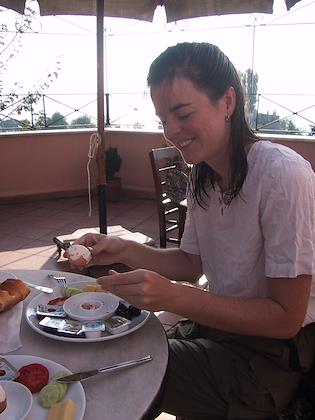 | | 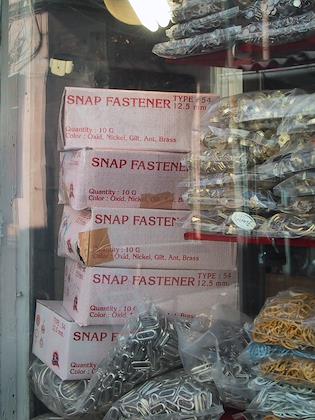 | | Breakfast at the Hotel Sebenem. Breakfast was generally very good, but very standard--bread, butter, honey, jam, cheese, tomatoes, cucumbers, and a hardboiled egg. | | I just had to get a picture of this store--a snapshot of a snap shop :-) |
| |
| 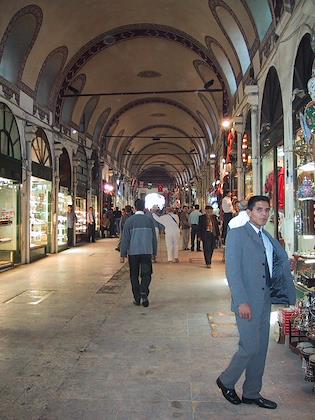 | | 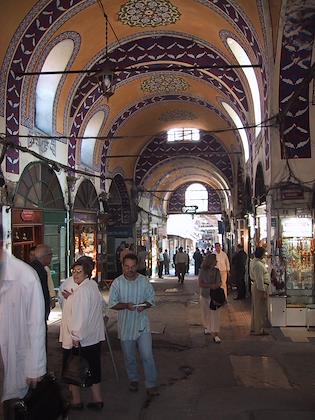 | | This is at the famous covered market, or grand bazaar. Most of the shops appear to cater to tourists, so of course there's dozens of places to buy a carpet. | |
| |
| 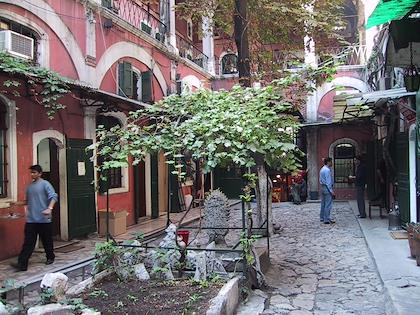 | | 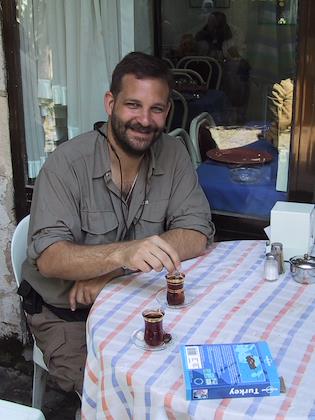 | | There were small hidden courtyards all around the market. | | We stopped to have Turkish tea, always served in small, tulip-shaped glasses, at a cafe within the market. We got charged about twice the normal price for the tea. Should have learned by this time to always ask the price before having anything. |
| |
| 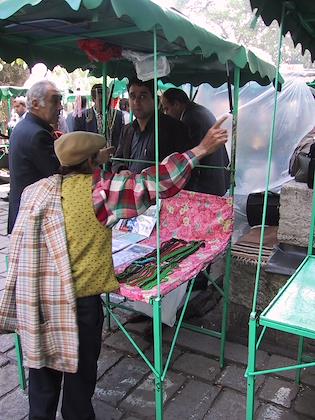 | | 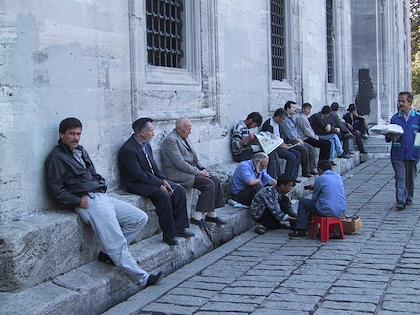 | | This man was selling pirated software, close to the covered market. There was a cop right next to him, chatting with the vendor, but he walked away when we took out the camera. Notice the guy looking at us anxiously. He appealed to the cop, to try to stop us from taking the picture, but the cop just laughed. He put away his pirated software right after we took this picture. | | This is a typical scene in Turkey--lots of men, just hanging out. I wonder if they're unemployed. |
| |
| 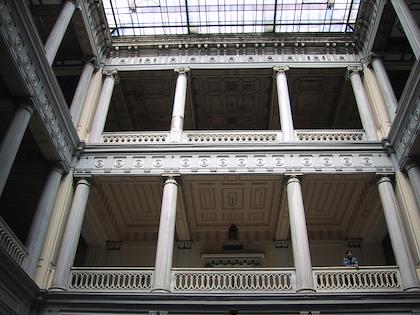 | | 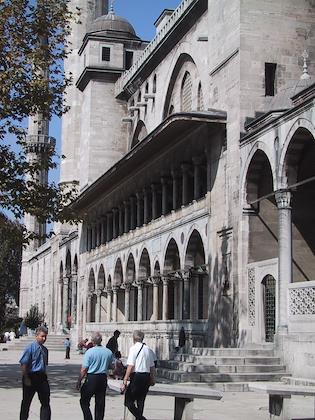 | | We walked to the university, which was originally the Ottoman War Ministry. We got directions to the cafeteria from some friendly students, and had lunch there. | | This is the Beyazit Mosque, close to the university. |
| |
| 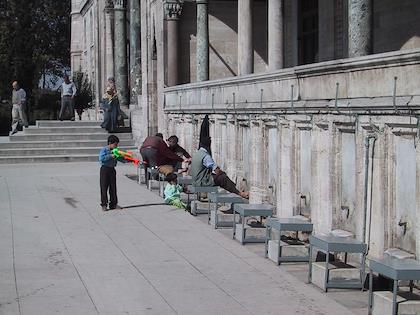 | | 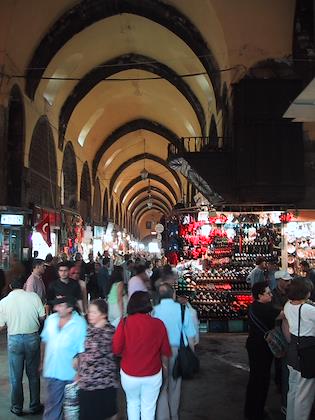 | | More worshippers, performing their ritual ablutions. | | The Egyptian Bazaar in Istanbul. Just before we took this picture, Eric was accosted by somebody waving pictures of naked women right around his chest (where his money pouch was hanging inside his shirt) pretending to try to sell him something. It was pretty obviously a robbery attempt. |
| |
| 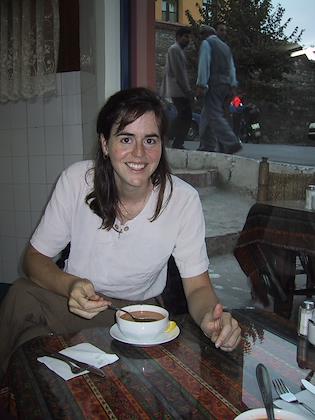 | | 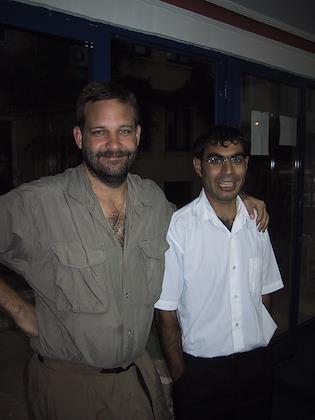 | | Dinner at a restaurant close to our hotel. Chairs and tables were very low--can you tell? I'm having one of my favorites--lentil soup with mint. | | This is the waiter at our favorite restaurant-- a very friendly guy. | | | |